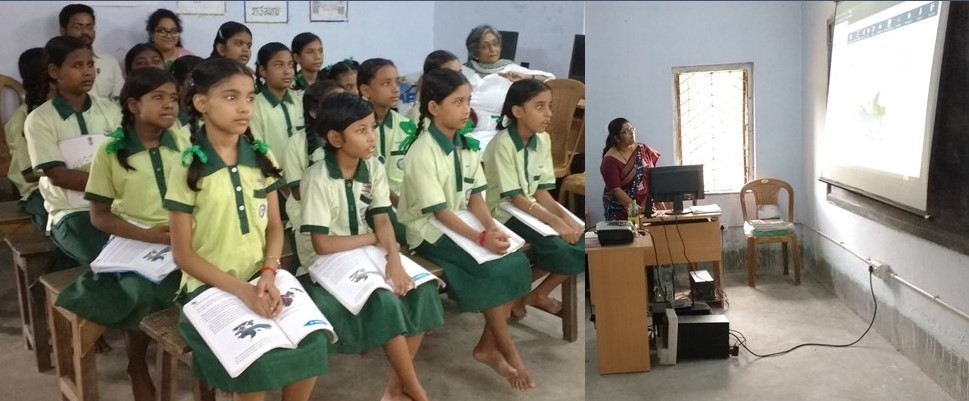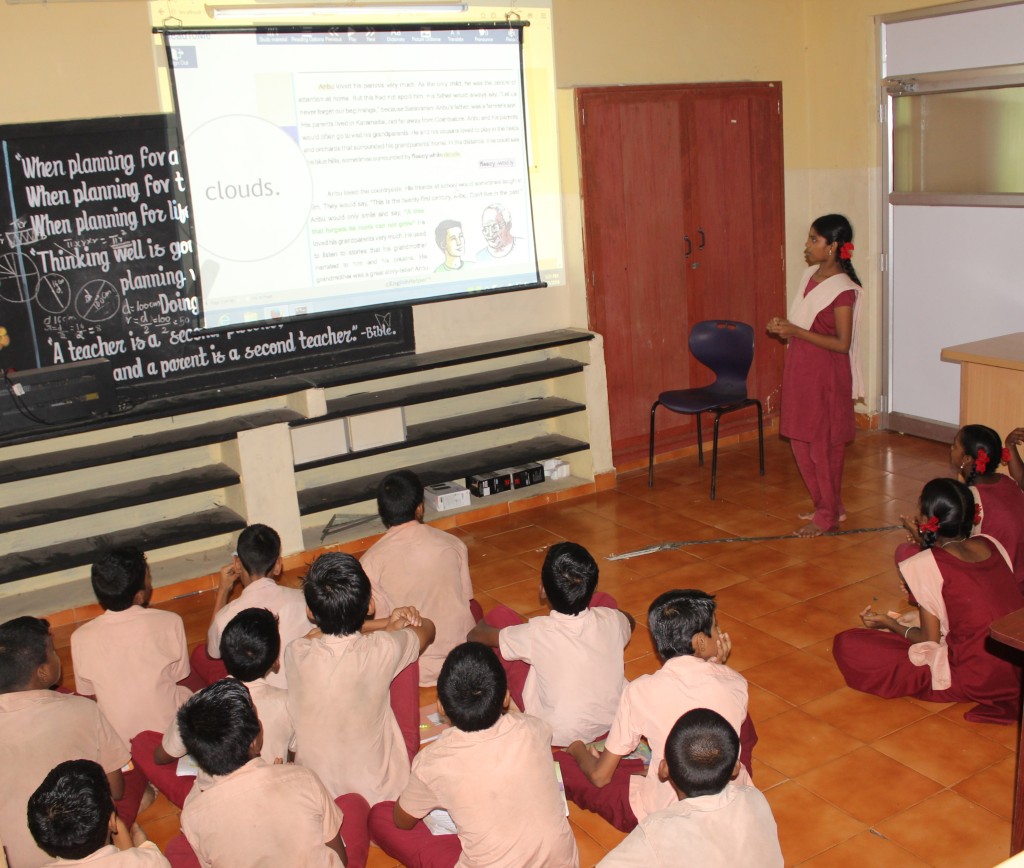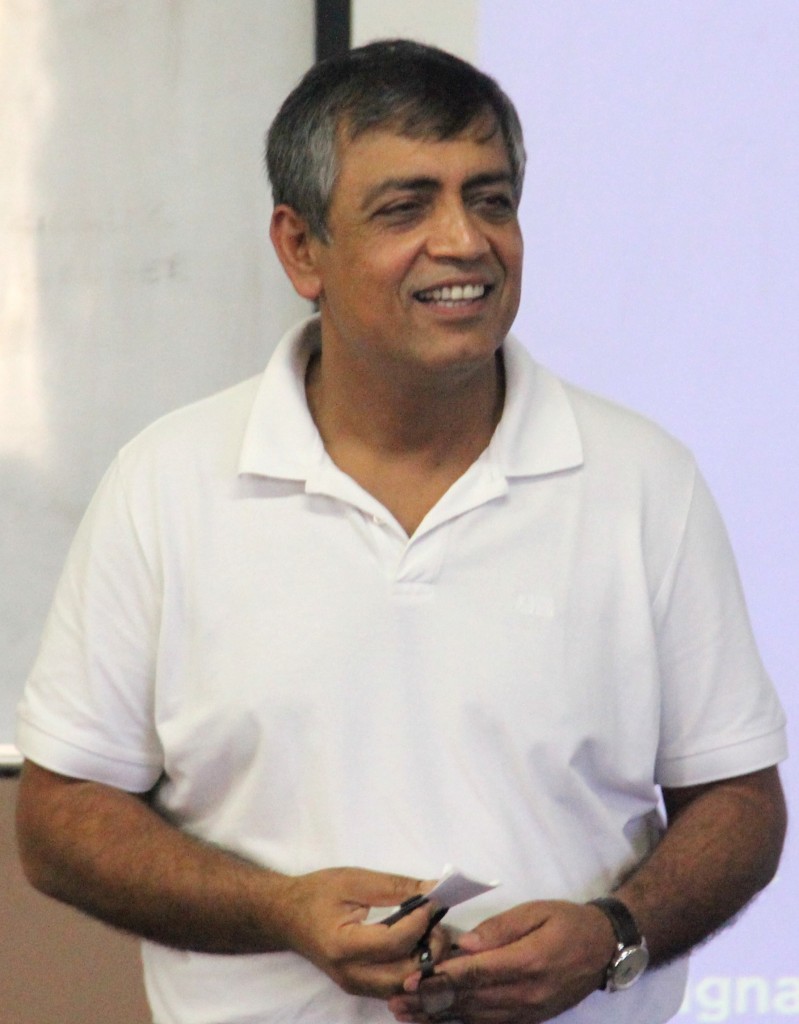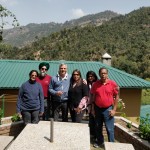Digitised textbooks make reading English easy
Despite our predilection with the English language as a nation, its proficiency among government schoolchildren is abysmally low. Our dream of educating our child in an English medium school begins even before he or she is born so that he or she finds better acceptability when he grows up. Studying in an English medium school is considered a matter of pride and even the ability to speak a smattering of the language automatically elevates a child or an adult in the society. Yet in government schools English takes a back seat.
According to the Annual Status of Education Report (ASER), a survey conducted by Pratham Education Foundation, more than 50 per cent of the students in Class V cannot read Class II books. This is where RightToRead (RTR), a multi-stakeholder initiative supported by EnglishHelper, in partnership with IL&FS Education and American Indian Foundation has stepped in to fill the gap.
RTR was launched in 2013 in 100 government schools in six states covering 20,000 students. This was an initial partnership between EnglishHelper and American India Foundation (AIF). In 2015-16, RTR will cover almost 5000 schools benefiting over one million students in India.
ReadToMe is a sophisticated technology enabled software, designed to improve reading, comprehension and fluency. It provides a multi-sensory experience,which enhances the student’s engagement and improves his retention. It also empowers students with various tools to help develop vocabulary, enable comprehension and practice pronunciation. The class textbook is digitised on the reading software. The ReadToMe class is integrated into the school time-table. It is a regular English period and the teachers are trained and empowered to use the software in class.
How it works: A cursor is placed on the section of the text to be read. An Indian accented voice reads out the text loudly, which the children listen to first and when the teacher mutes the volume they begin to read aloud the same text. The words appear in bold letters as they read. There is also an option to zoom and enlarge words, find the meaning of words with a Pictionary embedded in the software and also learn correct pronunciation and spellings.
Sanjay Gupta, CEO of EnglishHelper talks about the programme.
What is the goal of Right to Read?
The goal of RTR is to demonstrate that reading and comprehension technology when integrated with curriculum can make a material difference in literacy that can be scaled quickly and efficiently.
What is the approach and how do you implement the programme?
The approach is based on the tenets of ‘minimum change’ and ‘sustainability’ – digitise existing school textbooks, use the software assisted reading during normal class hours, teachers continue to play a key role in the process and use existing computer infrastructure to enable improved productivity of investments made.
From 100 government schools in 2013 to 5000 in 2015-2016, it has been a big leap. How did you achieve this target?
This is a key theme of the programme. If a school is equipped with minimum computing hardware i.e. a PC/projector or LED screen/speakers then it is simply a matter of shipping software to the school, training teachers (in person/remotely over Skype) for a couple of hours and enable installation/licensing using SMS. That done, the school is ready to begin.
Once schools are internet connected, the process will get easier and quicker. In addition, school administrators will get information on their fingertips (or phones) of usage and progress.
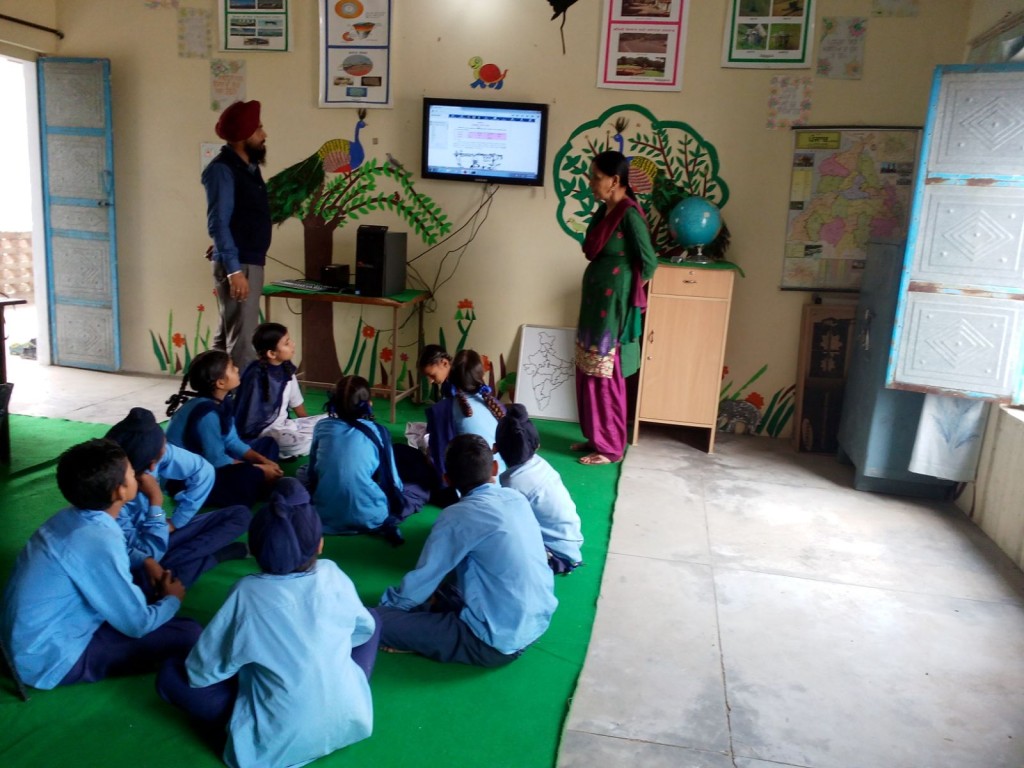
The ReadToMe class is integrated into the school time-table. It is a regular English period and the teachers are trained and empowered to use the software in class.
Why the importance to English only? Isn’t basic education more important for the children that you are targeting?
English is now part of school curriculum across the country. However, English reading skills are abysmally low. There is a great desire to learn English leading to a migration from ‘free to fee’ i.e. lowest income families are willing to send their children to ‘English Medium’ private schools. In addition, initially it is technologically simpler to introduce a common language (i.e. English) solution. That said, we are hoping to launch our software with Hindi soon. Fundamentally, while there are many reasons to begin with English, in the long run the goal is to support reading/literacy goals for any language using reading comprehension technology.
What is the role of the teachers in this programme? Do you have your own teachers or are government school teachers doing the job? If yes, are you training them too?
Teachers have a pivotal role. They control the use of the software in class and use it as a tool or an aid. In other words, the reading software enhances the teachers’ capacity and does not seek to replace the teacher. Training teachers is very simple since the tool is friendly and easy to use. Once the teachers begin using it in class they adapt and adopt practices as best for them and their students. As part of the initiative the teachers are also provided with a programme called TeachHelper. It helps them improve their own English as well as brush up key teaching fundamentals/concepts.
How difficult or easy was it to deal with the government?
We work with partners who are engaged with the government/s. Our partners have excellent relations with the governments concerned. Everybody has the same goal i.e. how to make a difference for the students.
How do you assess the success of your programme?
We use quantitative methods like pre and post tests conducted by professionally qualified independent agencies. Anecdotal insights are constantly obtained; the feedback from teachers/principals, students and in many cases parents has been very encouraging.
Who are your partners? What is their role?
We have many partners. Organisations like IL&FS and American India Foundation (an NGO) have provided critical front end support opening the doors to schools within their ecosystem. USAID has co-sponsored the programme.

